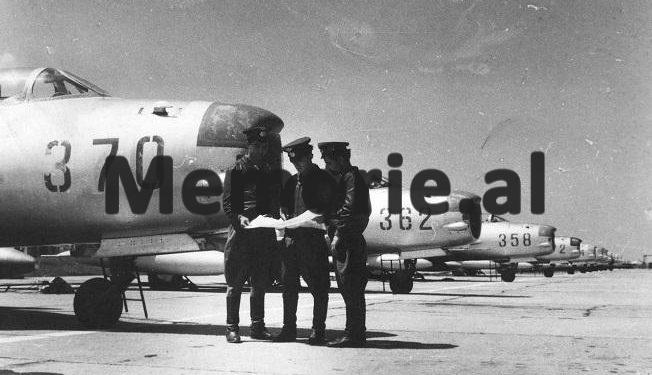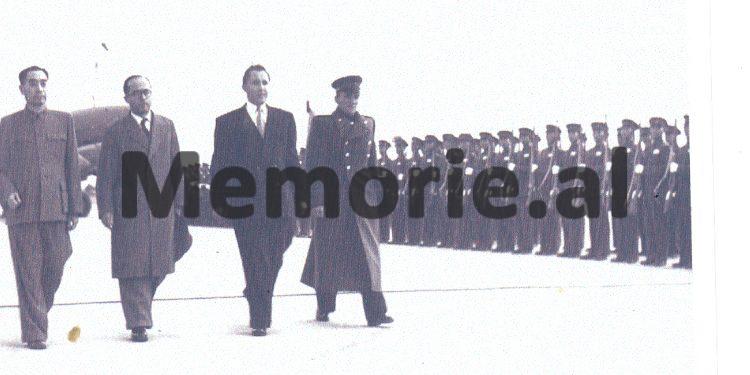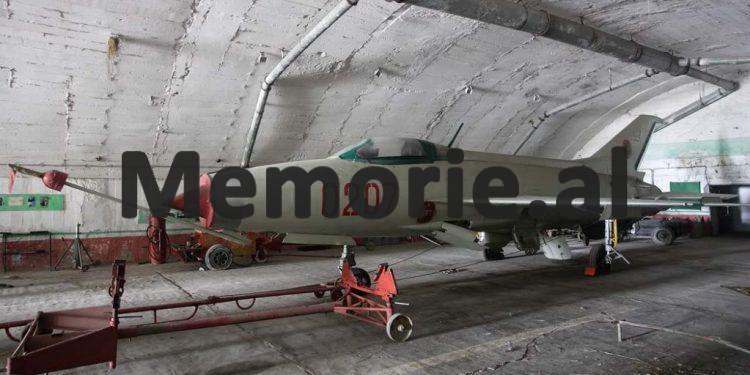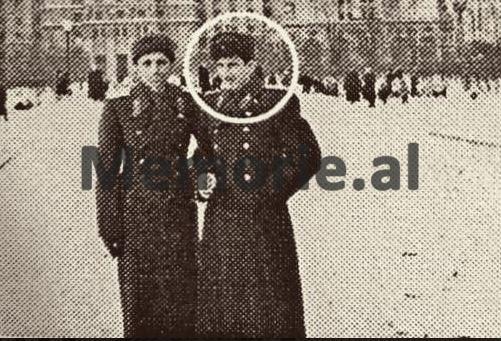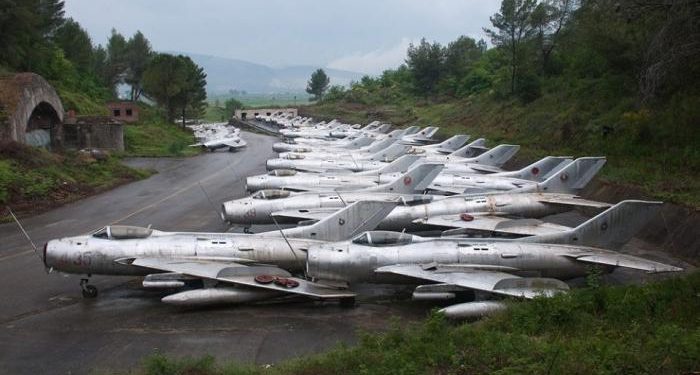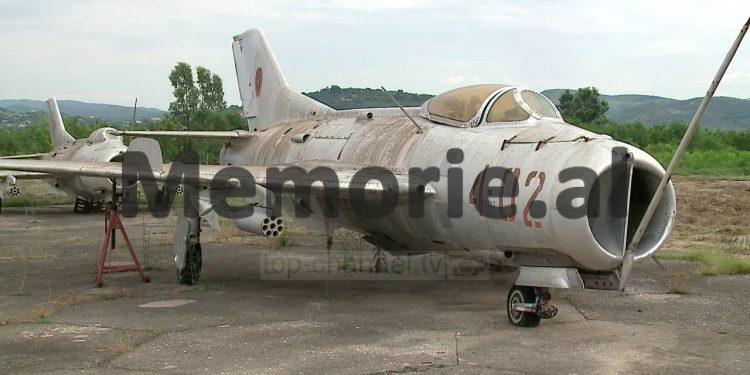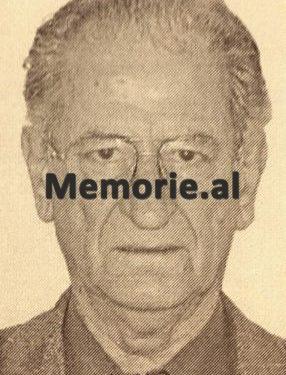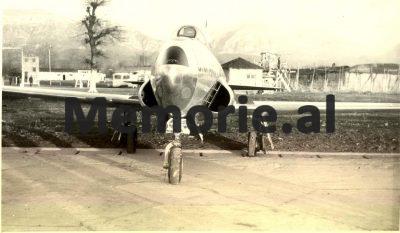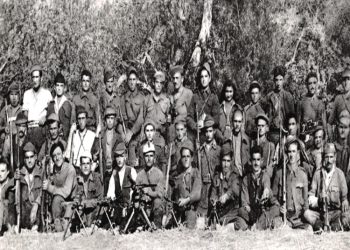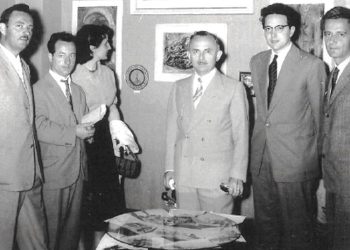Dashnor Kaloçi
Memorie.al publishes the unknown story of the design and construction of military airfields in Kuçova and Rinas in the early 1950s, which were built on the minds of Russian specialists and the work of thousands of political prisoners who worked on those works in very difficult conditions. Rare testimony of retired Colonel Lavdosh Dule, who after studying at the Genoa High School in Leningrad and then graduating from the Military Academy of Moscow in Moscow, served for many years in various positions at the Ministry. of the People’s Defense in Tirana, as chief engineer and deputy director of the Institute of Military Studies and Design, etc., giving his contribution in the design and construction of several major military works, such as: military airports of Kuçova, Rinas, Gjadri, Uzine Police, etc.
“At that time, none of the employees of the branch were specialists in the design of aerodromes, and worse, all three were only with secondary engineering education, graduated in the Soviet Union. Due to the lack of our specialized staff for that work, the Ministry of National Defense made a request and a specialist engineer in this field came from Moscow. His name was Denjisenko and he held the rank of major. Based on the tasks that the aerodrome would have, as well as the terrain conditions, it was decided to build in the Kuçova field on the Vajgurore Bridge. For the processing and sketching of technical drawings, eight geometers were commanded near our branch, who at that time were performing compulsory military service in various units of the Army”. This is how the retired colonel Lavdosh Dule, who after studying at the high school in the Geneva branch in Leningrad and later graduated from the Military Engineering Academy in Moscow, remembered the beginning of the work for the construction of the military airfield of Kuçova. For many years he served in various positions at the Ministry of Defense in Tirana, as chief engineer and deputy director of the Institute of Military Studies and Design, etc., where he retired in 1985. But even after the ’90s, he had nearly 80 years over his shoulder, he still continued to work in the former profession of design engineer, for which he graduated about half a century ago in the former Soviet Union. Even with the same passion and will as before when dealing with the design and implementation of military airports, but unlike years ago when working in the fields of Kuçova, Rinas, Gjadri, etc., retired colonel Dule, had to study the feasibility of some of the national road axes that were being built at the time. But unlike what seemed to him to be just routine, he continued to have nostalgia for the work and sweat he had shed along with many of his colleagues, in the construction of some of the military airfields he talked about, in this interview that is published exclusively from Memorie.al
Mr. Lavdosh, can you tell us something briefly about your past?
I was born in 1928 in the city of Vlora and the origin of our family, which was a patriotic family and completely connected with the War, is from the village of Tragjas. After finishing the primary school and the unique one in Tragjas and Vlora, I attended classes in the ‘Commercial’ of Vlora, which I interrupted because I became a partisan in the 12th Assault Brigade. Shortly after the war, I was appointed Secretary of Youth for Sevastin and in 1945 (after graduating from high school for all of us who had dropped out because of the War), I was sent to the Soviet Union, where I studied for a Engineer in Moscow and Leningrad. After finishing my studies in 1948, I returned to Albania and was appointed as the head of Xhenjo in the IV Regiment of Gjirokastra. In 1949, I took part in the fighting of the ‘August Provocations’ and after being wounded in Kamenik, I was transferred to Vlora, where I served until 1952. In that year I was transferred to Tirana at the Design Bureau at the Ministry of Defense, where I worked until 1959 when I went back to the Soviet Union to study at the Academy of Military Engineering in Moscow. With the breakdown of relations with the Soviet Union in 1961, I returned to Tirana and graduated from the Faculty of Civil Engineering. From 1961 to 1975, I worked in the Design Bureau and then in the Institute for the Study and Design of Military Defense Works, where I served as chief engineer and deputy director of that Institute. During those years I was involved in the study and design of a number of military works, such as the airfields of Kuçova, Rinas, Gjadri, the Poliçan plant (zone A underground), etc.
How do you remember the first beginnings of your career as an aerodrome designer?
In 1951, the top leadership of the time decided that our Air Force should be equipped with Mig-15 jets, but the existing airfields were unsuitable for their flight. For this reason, it was decided to build a new aerodrome and the task of designing it was entrusted to the Fortification Branch at the Genoa Directorate in the Ministry of National Defense. The branch, which was headed by the first captain, Pandi Dushku, had two sections: Fortifications and Aerodromes, which were run by the respective chiefs, Et’hem Muço and Remzi Erebara. Et’hemi was transferred to another post in 1952 and I was appointed in his place.
Did you have knowledge about building military airfields at that time?
At that time none of the branch employees were specialists in aerodrome design and worse all three were only with Jennier secondary education, graduated in the Soviet Union. Due to the lack of our specialized staff for that work, the Ministry of National Defense made a request and a specialist engineer in this field came from Moscow. His name was Denjisenko and he held the rank of major. Based on the tasks that the aerodrome would have, as well as the terrain conditions, it was decided to build in the Kuçova field on the Vajgurore Bridge. For the processing and sketching of technical drawings, eight geometers were commanded near our branch, who at that time were performing compulsory military service in various units of the Army.
Who were they, remember their names?
I remember some of them very well, as I had the opportunity to work with them for a long time. They were: Ferit Stërmasi, Zija Reçi, Kostaq Cika, Vangjel Capo, Skënder Janina etc. Thus, under the direction of the Soviet engineer, work began on the design of that aerodrome, working with great intensity for about 18 hours a day. From the employees of our branch, first Captain Pandi Dushku was engaged with Lieutenant Et’hem Muçon and then in their help, I was appointed.
What about the Soviet Major, what exactly was he doing?
The Soviet Major, Denjisenko, did the aerodrome layout, the layer thickness calculation, the sketches of the drawings, constantly keeping everything close and explaining with great patience everything to our two colleagues who were in charge of that work. In this way, the Soviet engineer did not only the work of the designer, but also of our teacher, recommending to us the relevant literature that he had brought from Moscow, which, years later when he left Albania, he left that literature to us. in our branch.
The work for the construction of that airport was done only by the Army forces, or were there also political prisoners?
The workforce consisted mainly of political prisoners (there were also some ordinary prisoners), whose number at that time numbered up to 2,000 people, and for them, a camp was set up on the east side of the airport. Among the prisoners were skilled specialists with relevant education, such as engineer Lutfi Strazimiri, geometer Namik Xhelili, etc., who had graduated from Western universities.
In September 1952, engineer Andrea Papastefani, who had just graduated from the Soviet Union, came to the construction site. Meanwhile, the Soviet engineer Denjisenko, together with me and Lieutenant Pandin, worked three days a week to complete the project and another four days we went to the construction site, where the preparatory work and implementation of the project in nature had begun. During this time, the sources of inerts were searched, the quarry was opened, the sand reserves in the rivers Osum and Devoll were determined, the joints for breaking and fractionation of ballast were set up, four centers for the production of concrete were set up, etc. After that, at the beginning of May 1952, work began on leveling and leveling the field, on opening the runway cassettes, maneuvering routes and self-propelled warplanes, leveling an area of 130 ha. Also, about 400 thousand cubic meters of soil were moved there, making possible the marking and quotation of the runway ‘R A’ and ‘V Q’, which was successfully faced by the geometers Hamdi Vokopola, Namik Xhelili and Vangjel Capo.
Did political prisoners have mechanized tools, or did they work with their arms?
At that large construction site, almost all work processes such as gravel layering, laying of slabs for concreting tiles, production, transportation and placement of concrete in the work, laying, assembly and movement of decovil were done by wings by political prisoners. While the compaction of the gravel and sole layers up to 98% was done with roller compressors 12 to 14 tons, while the concrete was compressed with a depth vibrator and cup type.
How many hours a day did the political prisoners work and was the Soviet engineer satisfied with your work?
Beginning in late May 1952, I worked about 16 hours a day in two shifts, and Captain Pandin and I were assigned to run them. On the first day of work on the concrete casting on the runway, we had an incredibly interesting episode with the Soviet engineer, from which we learned the right lessons. The pouring of the concrete started without the presence of Major Denjisenko and after two hours of work, our cup-type vibrator broke down. Since the concrete was produced very dry, the compaction was done by wings using a wooden spatula and as a result, the leveling was not achieved to the required quality. Thus, a row of tiles (65 x 3 m) was concreted and the next day when the Russian engineer came from Tirana, he ordered that all that concrete be demolished and the work be suspended until the necessary vibrators were provided.
How did you act after that?
Based on the Soviet vibrator model we had, the Reconstruction Company in its workshop produced 15 pieces of very good quality vibrators. This served to technically discipline us and after that day there were no more cases of violation of technical conditions.
How long did the Soviet engineer stay with you?
In October 1952, Major Desenjenko returned to his homeland and the technical control passed entirely over to Captain Pandin and me. But we both did not last long, as in the beginning of 1953, it was decided to build the Rinas airport and we were sent there.
Testimony of the former military chief engineer: “We said goodbye to the Rinas airport and did a lot of deforestation”
After working for some time at the Kuçova airport with the Soviet specialist, Major Desenjenko, the well-known engineer Lavdosh Dule was sent to design the Rinas airport. Regarding the start of works at that airport, he recalled: “The Rinas-Qerreti field, with the exception of a 60 X 40 green belt, at that time was all swampy and impassable forest. After the reconnaissance was completed and the boundaries of the next aerodrome were determined, the geodetic survey team was sent to the field, with Ferit Stërmasi in charge, who worked with his team for about 6 months in extremely difficult conditions. With the completion of the survey, together with Pandi we started the work for the design of the project. In choosing the planimetric position and direction of the runway axis, the existence of deep streams in the west of the area, as well as the rivers Tërkuzë and Tirana, which limited it on both sides, were considered. The project-implementation of the Rinas military airfield was completed in early 1954, and in the meantime, work had begun on setting up work sites and setting up a camp with about 2,000 political prisoners. The implementation of the works was entrusted to the Rruga-Ura Enterprise in Tirana, with director Sulejman Sala and then Sokrat Hobdari, which set up a special construction site with director Stavri Mihali and technical director, Namik Xhelili. With the arrival of political prisoners, the deforestation of the field and the correction of the relief in very difficult conditions began, as there were cases when excavations up to 3-4 meters deep were taken to extract the willow roots. “In 1954, the concreting of the runway and the collectors on both sides of it began, working in two shifts, and the concrete was transported in wagons which were pushed with wings by the prisoners.” Memorie.al




